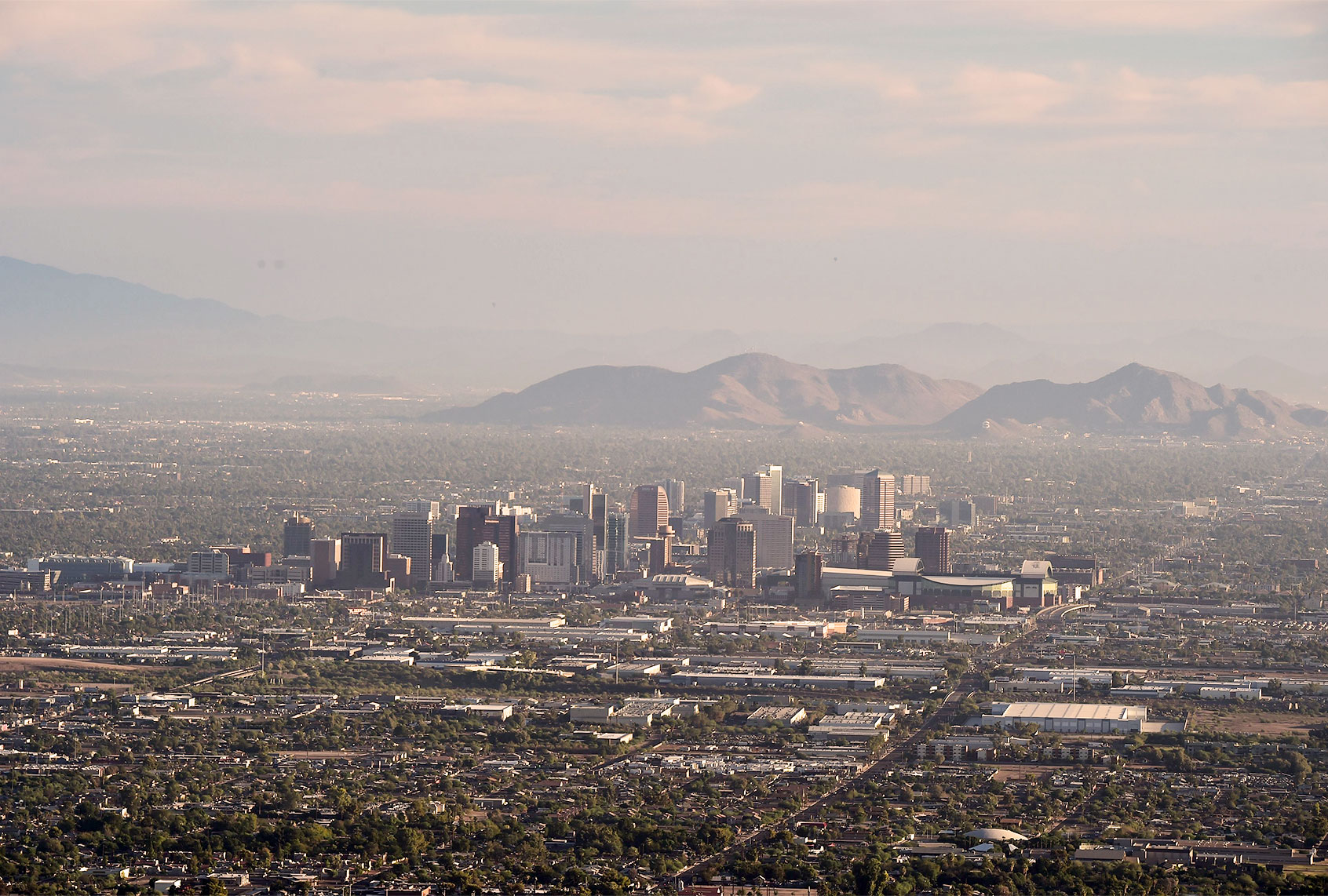Summer is not something to look forward to in Phoenix, Arizona. For many in the hottest city in America, summer is something to survive.
Masavi Perea, 47, knows this well. A former construction worker, he’s now the organizing director of Chispa Arizona, a grassroots group that fights for clean air and water, healthy neighborhoods, and climate action in Latino communities. One of his top priorities is to protect the people in West and South Phoenix who are most likely to suffer, get sick, and even die from extreme heat.
Heat is the number one weather-related killer in the U.S. Last year, there were 338 heat-related deaths in Maricopa County, where Phoenix is located — the most of any county in Arizona. Like many other aspects of climate change, extreme heat highlights inequities, such as who lives in a neighborhood with plenty of shade and green space, and who lives in a neighborhood with more pavement than parks.
In a recent study, Dr. Vivek Shandas, a professor of climate adaptation at Portland State University, analyzed temperatures in 108 different urban areas. He found that areas that underwent redlining — the government’s practice of excluding people of color from federally-insured mortgages — were consistently hotter than other areas. “For communities of color, immigrant communities, and lower income communities living in those historically redlined areas, disinvestment brought lots of concrete, asphalt in the form of highways and freeways, big box stores, industrial facilities,” said Shandas. The areas that were redlined are still the hottest areas within cities — sometimes by 18 degrees Fahrenheit, Shandas found.
And that’s outdoors. Within homes, the difference is often greater. On the same day during a heat wave, a home in a wealthy neighborhood with tree-lined streets and access to air conditioning might be 75 degrees, while a home a few miles away in a low-income neighborhood with lots of pavement and no access to air conditioning might be over 120 degrees. “That’s where we run into some pretty big disparities in terms of health outcomes,” Shandas said. “They end up getting exposed to temperatures that are lethal in terms of human health and wellbeing.”
In Phoenix and in other cities across the country, Perea and countless others have been working to help those who are the most vulnerable keep safe from the rising temperatures. “Phoenix is a bellwether,” said Dr. Melissa Guardaro, a research professor at Arizona State University. “People are still dying, and every heat death is an unnecessary death,” she said. But in many ways, the city is better prepared than others that are experiencing more and more extreme heat due to climate change. While more needs to be done, Phoenix does have protocols in place for when extreme heat hits, and was the first city in the country to fund an office of heat response and mitigation. These steps offer an example for other cities throughout the country that are grappling with deadly heat. “Right now it’s happening in Phoenix, but soon, it’s going to be happening everywhere,” Perea said.
Though it may sound basic, Perea says that the first step towards adapting to the heat is to talk with the people who are most at risk. Too often, Perea has seen government officials and nonprofit organizations come into neighborhoods like West Phoenix to try to tell people what to do without bothering to listen. “When people from the outside come to these communities, they already have the solutions. So people, community members, they don’t buy it. They don’t feel part of it,” he said. When outsiders try to communicate with them “from the top down,” it goes nowhere.
A few years ago, Perea participated in a project that took a different approach. A coalition of community based organizations, including Chispa, researchers from Arizona State University and the Nature Conservancy, and city and county officials came together to create hyper-local heat plans for the three neighborhoods most at risk in the Phoenix metropolitan area.
At first, people were distrustful. They could look around their neighborhoods and see streets and parks that had been neglected for years. “People were not expecting the government to do anything,” Perea said. But he and others with roots in the community were able to bring people into face-to-face meetings with local government officials and researchers. Once the people in power started listening to the community, “that’s when many solutions came up, many solutions from our own people,” he said.
At an individual level, people can keep their homes cooler by taking simple, low-budget steps, like using foam tape to seal gaps around doors, or making larger renovations, like installing insulation. At a community level, neighbors can check in on one another, paying particular attention to the elderly or those who might not have as many social connections. At a city level, governments can reverse decades of disinvestment by adding and maintaining green spaces and tree cover and targeting upgrades, like pavement that reflects the sun’s heat, to certain areas. Finally, at a state and federal level, policymakers can make electricity more affordable and offer assistance programs for people who struggle to pay their utility bills.
In the West Phoenix neighborhood that Perea worked with, some of the solutions people proposed included: adding shaded walkways for common routes (along with water fountains), expanding the warning system that lets residents know extreme heat is imminent, and offering first aid training so they could recognize the signs of heat exhaustion and heat stroke to help each other.


